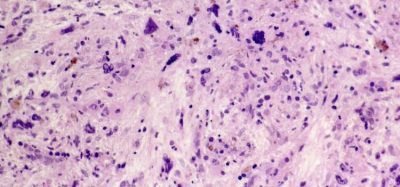Two-year study in over 1,500 patients compares Trajenta® (linagliptin) to the commonly prescribed sulphonylurea glimepiride
Posted: 28 June 2012 | | No comments yet
Results from a two-year study published in The Lancet today demonstrate that Trajenta® (linagliptin) provides similar blood glucose improvements when compared to the commonly prescribed sulphonylurea, glimepiride, in adult patients with type 2 diabetes (T2D) inadequately controlled on metformin alone. The publication also describes that linagliptin was associated with significantly fewer hypoglycaemic events and resulted in relative weight loss of 2.7 kg compared to glimepiride. 1
The publication reports on a two-year, randomised, double-blind study in 1,552 patients evaluating the efficacy of linagliptin compared to glimepiride as measured by a reduction in HbA1c from baseline in patients uncontrolled on metformin alone. 1
“These study results are interesting to the medical community because of the main study objective which was to compare the glycaemic control achieved by linagliptin and glimepiride,” Professor Baptist Gallwitz, Professor of Medicine, Eberhard Karls University, Tübingen, Germany. “The safety evaluation is interesting; and, although based on a small number of cardiovascular events (n=38), we were able to evaluate and compare the incidences of major cardiovascular events between linagliptin and glimepiride for the first time.”
The profile of linagliptin vs. glimepiride is being further investigated in the ongoing, head-to-head outcomes trial CAROLINA – the first outcomes study to compare a DPP-4 inhibitor with an active comparator. The study investigates 6,000 patients over a five year period and patient recruitment is due to complete this year. 2
Linagliptin (5 mg, once daily) is marketed in the U.S. as Tradjenta® (linagliptin) tablets, in Europe as Trajenta™ (linagliptin) tablets, and in other global markets as a once-daily tablet that is used along with diet and exercise to improve glycaemic control in adults with T2D. Linagliptin should not be used in patients with type 1 diabetes or for the treatment of diabetic ketoacidosis (increased ketones in the blood or urine). With linagliptin, no dose adjustment is required regardless of declining renal function or hepatic impairment. 3,4
About Diabetes
An estimated 366 million people worldwide have type 1 and type 2 diabetes. 5 Type 2 diabetes is the most common type, accounting for an estimated 90 to 95% of all diabetes cases. Diabetes is a chronic disease that occurs when the body either does not properly produce, or use, the hormone insulin. 7
References
- Gallwitz, B., Rosenstock J., Rauch, T., et al. Two-year efficacy and safety of linagliptin compared with glimepiride in patients with type 2 diabetes inadequately controlled on metformin: A randomised, double-blind, active controlled, non-inferiority trial. Lancet. 2012 June 28. [E-publication ahead of print].
- Clinical Trials: CAROLINA: Cardiovascular Outcome Study of Linagliptin Versus Glimepiride in Patients With Type 2 Diabetes.
- Trajenta™ (linagliptin) tablets. EMA Summary of Product Characteristics. Approval 25 September 2011.
- Tradjenta™ (linagliptin) tablets. Highlights of Prescribing Information. Initial U.S. Approval: 2011.
- International Diabetes Federation. IDF Diabetes Atlas, 5th Edition: The Global Burden http://www.idf.org/diabetesatlas/5e/the-global-burden. Accessed on: June 21, 2012.
- International Diabetes Federation. IDF Diabetes Atlas, 5th Edition: Diabetes http://www.idf.org/diabetesatlas/5e/diabetes. Accessed on: June 21, 2012.
- International Diabetes Federation. IDF Diabetes Atlas, 5th Edition: What is Diabetes? http://www.idf.org/diabetesatlas/5e/what-is-diabetes. Accessed on: June 21, 2012.








